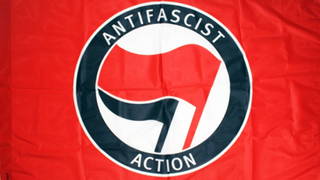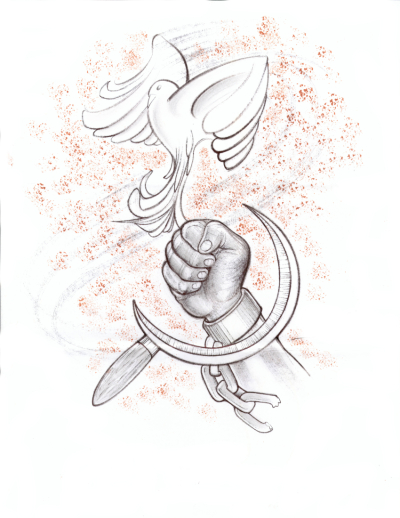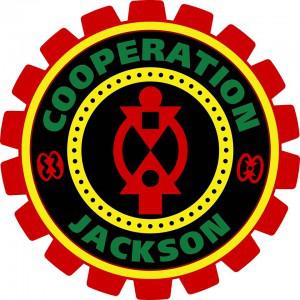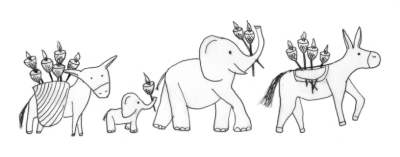
What are MIM(Prisons)'s Thoughts on Antifa?

A California prisoner asks: “What are MIM’s thoughts on”Antifa” and what and who are Antifa? Any information you can provide will be helpful, thank you.”
MIM(Prisons) responds: Antifa stands for anti-fascist, and it derives from movements in Europe that have a deeper history that we won’t attempt to address here. It’s primary symbol is a black flag and a red flag, symbolizing the unity of anarchists and communists of all stripes in unity against the fascists. “Antifa” is a generic term in the United $tates. There is no central organization, only local collectives. Anti-Racist Action is probably the most active formal group that is akin to Antifa in the United $tates.
The Antifa strategy is one of confronting various stripes of racists, white supremacists, fascists, etc. in the streets and in their communities. When such organizations make a public stand, especially when they organize marches, Antifa will try to make sure there are more counter-demonstrators and will attempt to shut down their actions. The long-time Antifa activists often focus on researching these groups, tracking down their members, doxing them and exposing them.
MIM has never been involved in this type of organizing. Strategically we think it focuses on a fringe element rather than the real enemy – imperialism. Imperialism is murdering people in the streets, locking them away and torturing them, bombing countries, starving whole populations and polluting the world. Fighting nazis in the street does not contribute to ending imperialism at this time. Nor does campaigning against Trump.
That said, if fascism gains traction in this country, then we need to assess when to shift our strategy away from imperialism as the primary enemy and towards the fascists. At that time we will certainly be allying with and relying on some of the knowledge of those that have been following these groups closely for years.
Why is Antifa in the News?
So why is this comrade asking us about Antifa now? Probably because President Trump threatened to declare it a terrorist organization, among other rants against them over the years. So why is Trump talking about Antifa? As the self-proclaimed enemies of all things racist and fascist, the various elements of the alt-right/dissident right/third positionists and racists in online forums have accepted Antifa as their enemy (more on these groups below). Donald Trump rose to popularity in part by following the media outlets associated with these movements and echoing their talking points, one of which is the danger and threat that Antifa poses. Many of these groups use videos of street fights and confrontations between their members and Antifa as recruitment material. (Antifa as such has little to do with the recent uprisings in the United $tates against police murders, though certainly many who work in Antifa groups participated in the protests as well. Trump’s statement falsely implied that Antifa was behind these uprisings.)
The President of the United $tates stated that Antifa is terrorism. In other words, he said opposing fascism should be illegal in the United $tates. Quite a bold statement. One that thankfully received strong rebuke from the majority of the state apparatus at the time. In response to that statement by Trump, MIM(Prisons) joined the calls in the streets that “we are all Antifa.”
Is Fascism on the Rise Due to Crisis?
Since the 2016 presidential campaign we have published a series of articles addressing the question of whether fascism is here, or on its way. An article we published in November 2016, arguing that the crisis that would trigger fascism just wasn’t there yet, ended with, “That being said, based on Trump’s statements and actions, if Amerikan capitalism was truly threatened by the oppressed internal nations, Trump’s open chauvinism would easily transition to far heavier fascist tendencies.”(1) Now in 2020 we had the broadest display of street actions, largely by oppressed nations, seen in most of our lifetimes, if ever in this country. And we have a downward trend in the economy due to declining rates of profit and exacerbated by a global pandemic. So we are in a crisis, and as the threat to Amerikan capitalism becomes more and more real, so does the threat of fascism.
Theoretically, fascism is always on its way in the advanced stages of imperialism. This is because of the inherent contradictions within capitalism that make it harder and harder to extract a profit from the circulation of capital. Without profit, the economy stops under capitalism. That is why the COVID-19 shut downs have been so disastrous. Under socialism, we could cut back production and shelter in place without threatening the future of the economy.
Denying this reality, one of the ideological leaders of the alt-right called on the Trump administration to just shut down the economy for a period and restart again like a long weekend. But capital must circulate, when it does not things begin to collapse like a house of cards. The amount of value being circulated in the realm of finance capital just got a shot of another few trillion dollars by the COVID-19 stimulus bills. This money was created by the Fed from thin air. Most countries would face a decrease in currency value and increase in consumer prices if they did this. The U.$. is depending more and more on international finance capital to come into the country to prop up the dollar and Amerikan consumerism. But if there is no profit to be had, that finance capital stops coming. The reason this hasn’t happened already is that the bourgeoisie is aware that a slowdown in finance capital circulation will lead to a collapse of the system like a house of cards. This is when the all out war option of the fascists becomes the only option.
Parasitism Begets Fascism
Another alt-right ideologue, has recently put out a video denying that fascism is capitalism in decay. Eir thesis is that if there was a crisis in profitability of capital that the system would have to go back to some kind of feudal system and greatly reduce production to restore profits. Since fascism in Germany increased worker incomes and overall production, ey argues this proves fascism was not a response to crisis. This logic sort of makes sense from the revisionist “Marxist” perspective that anyone employed is exploited and that profits don’t cross borders.
The MIM answer to why the capitalism in decay thesis is correct is in parasitism theory. Really, few would deny that Germany’s economic flourishing came from the literal and brutal robbery of land, resources and labor (through enslavement) of other peoples. But similar things occur in all imperialist countries, even if just a bit more “civilized.” We point this out to show how revisionism calling itself Marxism plays itself nicely into the ideas of fascism. And it is through the appeals to a populist class interest of the labor aristocracy that the fascists, social democrats and revisionist “Marxists” all bolster support for imperialism, despite their rhetoric against war or whatever.
Another thing all of these forces have in common is labeling things based on their form rather than their substance. Whether it’s the “Marxists” who see Xi Jinping as leading a socialist country or the fascists saying that Mussolini was opposed to the bourgeoisie, they are putting ideas, words and symbols above substance. They say, “see the leader said this, therefore ey couldn’t support that.” The capitalists, as a class, do not care about the words as long as the economic substructure is still functioning to produce profits. Mussolini (and the King) ensured that it did as does Xi Jinping today. This is the same reason why today every multi-national corporation is tripping over each other to put out statements on and make donations to Black Lives Matter. Yes, there are ideologues within the bourgeoisie, but the class as a whole, in order to continue on as a bourgeoisie, must ensure that profits keep flowing. And if stamping Black Lives Matter all over their website and social media feeds can assist with that, then call Jeff Bezos anti-racist.
Oppose Left and Right White Nationalism
The alt-right is actively extending olive branches to the left wing of white nationalism, specifically those they refer to as “Bernie Bros.” Some in the alt-right claim to have 90% agreement with such social democratic types, specifically in their critiques of capitalism and calls for populist economic reforms and a state that can deal with a global pandemic. Our saving grace right now in the United $tates is in the Black Lives Matter (BLM) movement, as well as the struggles against ICE detention which has also rallied significant support in recent years. The outpouring of support for BLM has been surprisingly strong. Even if the multinationals are just motivated by profits, this is like nothing we’ve seen in our lifetime. Clearly they have recognized where the winds are blowing, and it is not towards the racism of the alt-right.
The fascists argue that they are an alternative to the neoliberal bourgeois order and the Marxist communist order – hence “third positionists.” But Dimitrov critiqued this misconception for the COMINTERN during World War II, stating that “Fascism is the power of finance capital itself.” The fascists argue that finance capital did not and does not support fascism in its rise to power. MIM added to Dimitrov’s thesis in 2005: “It is only the finance-capital dominated petri dish where fascism grows. Today, the labor aristocracy of ONLY the imperialist countries is the”main force” of fascism…“(2) So again, all the groups we mention above, whether”left” or “right” are organizing this class and activating them towards fascism by telling them they are the oppressed and they deserve more.
More on Class and Economic Systems
MIM and the COMINTERN agree on the dialectical nature of class struggle under capitalism as it relates to the phenomenon of fascism – that is that capitalism is identified in the contradiction and interdependence of two economic classes: the proletariat and the bourgeoisie. In this view, there are two paths, or two economic systems: capitalism (of the bourgeoisie) or socialism (of the proletariat). Other classes exist and have their own interests. But they will not shape history in their image. Our world today is shaped in the image of the bourgeoisie, and Marx explained why the future lies in the hands of the proletariat, those who have nothing to lose but their chains.
The petty bourgeoisie (including the First World labor aristocracy) doesn’t have an image for the world. Their ideology is that of the bourgeoisie, steeped in individualism. And because of their varying lots in life, their interests are varied, made up of little groups just trying to make capitalism work for them. They can be united in the nation-building project that involves their nation being on top. But even this will not elicit much sacrifice from this class as a whole unless conditions are quite dire.
When we talk about the labor aristocracy of the imperialist countries being the “main force” of fascism, we still agree with Dimitrov that fascism is the power of finance capital. It is finance capital that gives these tendencies real power. This truth can be seen when you investigate the organizations in the fascist realm. The most successful efforts to unite these petty bourgeois forces and use them towards real political goals are led and funded by millionaires, with access to advanced military weaponry and international connections to intelligence agencies. While there are many small, organic groups that are in this realm, the ones that pose a real threat really aren’t so organic.
Our comrades in prison can understand this dynamic, where it is quite common for white nationalist organizations to have “special” relationships with the pigs, to the point of helping to enforce for the state. Some of our comrades who have served in the military have also seen direct coordination between the military and local white nationalist organizations around perceived threats of oppressed nation rebellions. It’s the same in prison.
From the proletariat comes the true guerilla, who starts from nothing, and gains their tools and supplies by taking from the enemy oppressor. The guerilla does not start out with high-end military equipment, the guerilla earns it. And even before we get to the military phase, the true mass character of the communist camp is evident. Even in the bought off imperialist core, you can see genuine organizers popping up in all areas, fighting for similar goals, from a real organic desire for change and humyn progress. In the United $tates this is fed by the oppressed nations and by the youth and by all justice-seeking people.
The proletariat of the world must distinguish itself from the parasitic populism of the First World labor aristocracy. Antifa has not done this. Antifa is open to militant Liberals because they tend to see this as a battle over ideas in peoples’ heads and don’t have an honest class analysis of what is going on.
The alternative that MIM offers is that those of us in the imperialist countries are criminals that must reform our ways. That the rest of the world wants us to reform our ways and welcomes us in joining in building a new world based on internationalism, humynism and solidarity. The oppressed people of the world must guide us towards true internationalism and not make excuses for the backwardness of the bought-off populations. Amerikans still haven’t made right the crimes they committed against the internal semi-colonies of this land. That is being discussed in the mainstream today. But we still aren’t discussing making things right with the majority of the world that we have exploited, polluted and murdered for the comfortable lives we live here. This is what we see as pro-active anti-fascism. And it’s not about taking on some guilty complex for your ancestors, it’s about saying that you will not pass the exploitation on to your descendants. And this must be part of the current struggles of the oppressed nations here today, or else we will just end up with more exploiters with more diverse skin tones.
notes: 1. A contributor, November 2016, What
is Fascism? Analyzing Trump Scientifically, Under Lock & Key
No. 53.
2. The
labor aristocracy is the main force for fascism, MIM 2005
Congress.
3. also see our Fascism and
Contemporary Economics study pack
Related Articles:This article referenced in:










